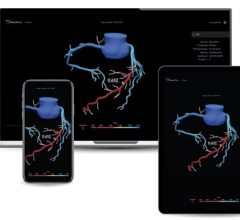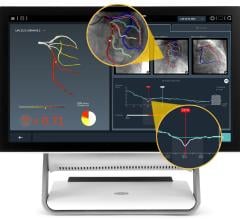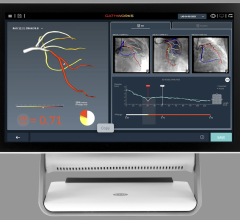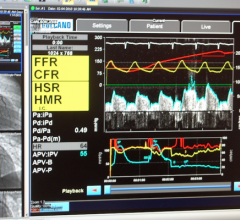
May 31, 2017 — Acist Medical Systems Inc. announced results from the ACIST-FFR Study demonstrating the consistent and correlative performance of the Navvus MicroCatheter compared to standard pressure wire systems. ACIST-FFR (Assessment of Catheter-based Interrogation and Standard Techniques for Fractional Flow Reserve measurement) is the largest multi-center study to compare microcatheter FFR to pressure wire FFR, as well as the only study to include multiple pressure wire comparators. The study was presented for the first time at EuroPCR 2017, May 16-19 in Paris, France.
“As the use of FFR in clinical practice continues to grow, it becomes increasingly important to understand the benefits and limitations of each type of FFR technology in regards to delivering consistent measurements and making coronary intervention procedures as efficient as possible,” said ACIST-FFR co-principal investigator William F. Fearon, M.D., Stanford University School of Medicine, Stanford Cardiovascular Institute at Stanford University.
This prospective, multi-center study evaluated 245 patients with stable coronary artery disease at 11 U.S. centers, assessing the differences in fractional flow reserve values obtained using the Navvus MicroCatheter, to those using standard pressure wire systems. Patients’ FFR measurement was obtained by a pressure wire alone and with the microcatheter FFR over the pressure wire. All waveforms and measures were reviewed by an independent FFR core laboratory based upon pre-specified criteria for quality measurements.
Of the patients enrolled in the study, 169 had complete data meeting FFR core laboratory criteria. In these patients, an angiographic core lab used quantitative coronary angiography (QCA) to determine a mean reference vessel diameter (RVD) of 2.8mm, a mean lesion length of 15.3mm and a mean diameter stenosis of 47 percent. Unique to this study, 30 percent of cases included a RVD <2.5 mm — prior microcatheter FFR clinical studies had only included vessels with RVD ≥2.5mm.
The FFR data showed that microcatheter FFR technology offered consistent and modestly lower FFR measurements when compared to a pressure wire, with an average difference of -0.022 (95 percent CI: -0.029, -0.015). In nearly all of the cases (97 percent), the differences in FFR measurements did not impact clinical decision-making.
“The difference found between FFR measurements with a pressure wire and microcatheter tended to be influenced by RVD and lesion length; however, from a practical perspective, the clinician can just look at the microcatheter FFR itself,” said ACIST-FFR co-principal investigator and presenter Matthew Price, M.D., director, cardiac catheterization laboratory at Scripps Clinic. “The lower the Navvus FFR, the greater the bias. Since the bias is less at FFR values within the gray zone and higher, on average the clinical impact of the difference will be minimal.”
While the mean pressure drift was not different between the pressure wire and the microcatheter (0.015 vs. 0.015, p=0.44), the rate of clinically significant pressure drift was numerically higher with the pressure wire (7.4 vs. 3.5 percent, p=0.10).
“This study confirms and expands upon previous findings in a much more robust manner,” said Price. “It is encouraging to see these data further validate the diagnostic capabilities and technical merit of microcatheter FFR technology.”
Unlike standard pressure wires, the Acist RXi Rapid Exchange FFR System and Navvus Rapid Exchange FFR MicroCatheter allow physicians to use their 0.014-inch guide wire of choice throughout the procedure, addressing challenges of pressure wires, including accessibility in challenging anatomies, maintaining wire position, pressure‐measurement drift and ease of obtaining post‐intervention FFR.
For more information: www.pcronline.com


 January 03, 2024
January 03, 2024 







